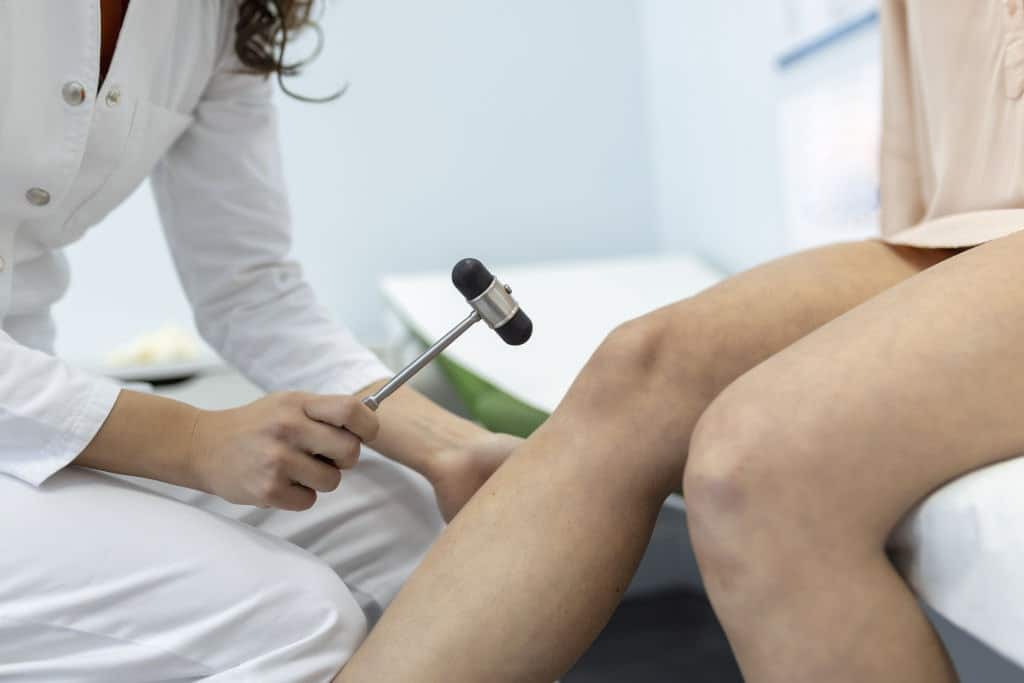A bursa is a cushion–like sac found within the joints, filled with the synovial fluid used for lubrication. It is essential because it prevents friction at the sites during movement. However, injuries and certain health conditions lead to the inflammation of the bursa’s synovial membrane. This inflammation is due to the production of excess synovial fluid, hence, leading to a condition called bursitis. Initially, patients are given anti-inflammatory medications to treat this condition. However, as it worsens and the response from the drug is no longer effective, doctors recommend bursectomy.
What Does Bursectomy Involve?
The pain identified by patients with bursitis is usually described as sharp and intense. Every movement or pressure by or on the affected area produces blinding pain.
Apart from pain, bursitis can cause restriction of movement too. This restriction results in patients with severe bursitis being unable to continue their daily activities as they normally would. Hence, they result to bursectomy as a relief treatment.
According to a medical publication by Cooper University Healthcare, bursectomy is a simple and minimally invasive surgical procedure involving removing the inflamed bursa.
As it heals, a new bursa will form in the body. This technique is so smooth and safe that patients walk in and out of the operating room on the same day.
The orthopedic doctor makes a small incision or cuts over the affected joint during a bursectomy. An arthroscope or a tiny camera is inserted into the cut so the doctor can move the surgical instruments around and cut the bursa. Extreme care is usually taken, so nothing essential is cut instead.
After the surgery is done, the patient is stitched up and bandaged. The surgeon may also give a compression bandage to prevent swelling and blood clots. Normally, the surgery usually takes thirty minutes to two hours. The recovery period is just as quick, with the joint completely healed in a few weeks.
With how simple this surgery is, nothing is expected to go wrong. However, this is not always the case, as negligence and malpractice can come into play. It does not mean that the doctor’s recklessness causes all complications. But the ones that are, usually find their way into court.
Now, this is where medical animation comes in to illuminate the dreadfulness of the situation for the court.

Complications and Risks of Bursectomy
There are not a lot of risks that arise with this procedure as it is far too simple. However, all surgeries have a chance of getting complicated.
The most common risk associated with bursectomy is infection. If the medical practitioner does not take caution during and after the surgery, the wound can easily get infected.
Case Reference 1
An example is seen in the case of Bolen v. Woo.
The plaintiff sued her doctor for medical malpractice. She had a problem with her right heel. There was a series of misdiagnoses and failed advice from him before he finally realized it was a painful bursa on her heel. When it started draining, he recommended surgery be carried out.
She claimed that he packed the wound with silver nitrate after the surgery. However, at that time, it was not infected. The plaintiff says he gave her permission to return to work when she asked. Unfortunately, immediately after the anesthesia wore off, she felt extreme pain. She returned to the hospital asking that the packing be removed, but she was denied by the doctor, who claimed that it had not healed. Her heel got worse and worse and looked angrier by the day. That’s when the doctor claimed the wound was infected.
The wound would not have gotten infected if the doctor had taken proper precautions after the surgery. His negligence came to play somewhere in between postoperative care.

Case Reference 2
Another major risk that comes with this surgery is the various anesthesia challenges. The patient could develop a coughing fit after the anesthesia has just been administered. Besides, it could go awry and lead to amputation of the site. For instance, in the case of Rockwell v. Stone, that’s exactly what happened.
The plaintiff sued his orthopedic surgeon and the chief of the anesthesiology department. He was diagnosed with a bursa condition in his right elbow, and a bursectomy was recommended. His surgeon did not inform the Chief of Anesthesiology of the nature of the general anesthesia.
During the procedure, once the surgeon put the needle in his left arm, the plaintiff screamed in pain, and the resident physician removed the needle. His arm was blanched and had a very little pulse. His surgeon was summoned and decided to proceed with general anesthesia and perform the surgery. After the surgery on his right arm, they tried to counteract the effects of the sodium pentothal, but all was in vain. His arm had to be amputated.
The injection of sodium pentothal caused an arterial spasm. The pentothal causes blood to clot, which is another complication of bursectomy. However, this clotting is usually prevented by removing the syringe, the needle still in place, and injecting procaine in the same area. The nurse didn’t do this step because the physician removed the needle immediately. Hence, instead of fixing the mishap with a medical alternative quickly, the surgeon proceeded with general anesthesia and continued the operation.
That was total recklessness on the part of the surgeon and the chief. It could’ve been remedied if the surgeon wasn’t negligent in his duties.
Other risks that occur during or after surgery are excess bleeding and nerve damage.

How Medical Animation Highlights Bursectomy
It takes a lot of effort to cause harm to a patient during this surgery; extreme negligence. As previously mentioned, this is a simple and minimally invasive surgery. The patients expect to go in and out safely. So imagine the emotional stress a patient and their family is put through when there are unnecessary complications.
Medical animation assists in cases like this. It helps to simplify the medical jargon for the court and create empathy within the jury for the victim.
In such situations, the attorney can display trial animations to explain simply exactly how the surgery is meant to go. The animation lets the jury and court see that the surgery is relatively easy for any certified orthopedic surgeon.
They can also exhibit the doctor’s reports in court. An expert witness would then carefully pinpoint where the doctor went wrong during the surgery. For instance, in the anesthesia case, the expert witness would explain what should’ve been done as a medical alternative after the medical personnel had dropped the needle.
The attorney can also present medical animation to show how the complications can intertwine, like the one above, where the anesthesia issue was a blood clot. Infections can turn into serious diseases like nerve damage. Nerve damage goes on to cause paralysis or disabilities. The animation shows the jury that something minor can turn major quickly without proper care.
Truly, in a surgery like this, where the odds are in the patient’s favor, a mishap can only be the doctor’s fault. All medical animations do is buttress that fact.
Conclusion
A case of malpractice with a minimally invasive procedure like a bursectomy is sad. It’s even unfortunate when the plaintiff can’t convince the jury of the harm caused, hence causing them to lose compensation or get a reduced one.
However, with medical animation of a bursectomy, the damage and malpractice can be clearly visualized. Hence, helping to influence the amount of compensation paid to the victim.
At Fox-AE, we are a medical animation company dedicated to creating demonstrative exhibits that cut through the noise and blurry areas to simplify the facts of the case and illustrate the opinions of the expert witnesses.
We work closely with attorneys and expert witnesses to ensure we create admissible exhibits.






